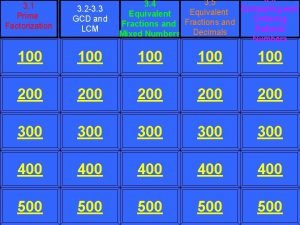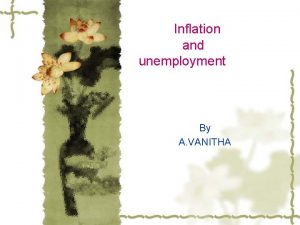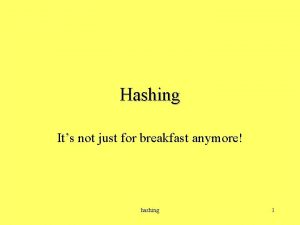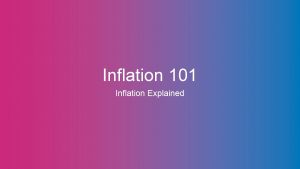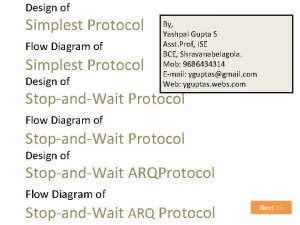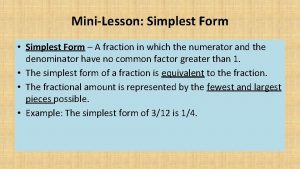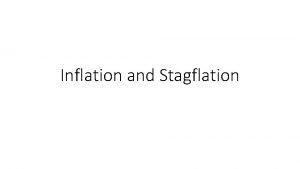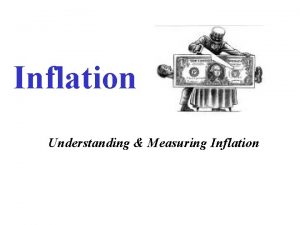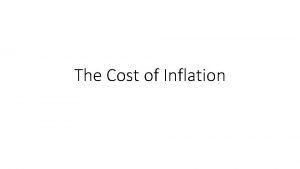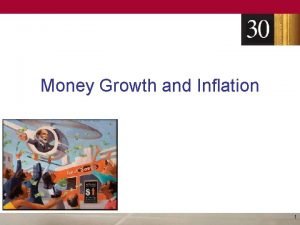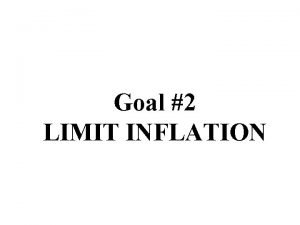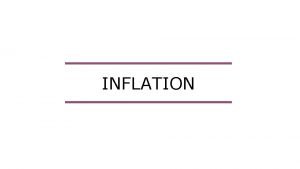Inflation Inflation n Inflation at its simplest just











- Slides: 11

Inflation

Inflation n Inflation at its simplest just means a “general increase in prices”. n A more complicated way to look at it is that inflation is a decrease in the Purchasing Power of your money. ¨ Purchasing power means your money’s ability to purchase goods and services

Measuring Inflation n We measure inflation by looking at ‘price levels’ and ‘price indexes’. n Price level is an average of the prices of all the goods and services made in one year. n Price Index is an average of the prices of a certain set of goods

CPI n The most famous price index is the “Consumer Price Index” or CPI n It is an index of the prices of a set of items intended to represent the “market basket” of a typical consumer. n In other words, it’s an index of the goods and services the government thinks most people buy in a year.

Official CPI Composition

Determining the Inflation Rate n n n n Inflation Rate: the percentage change in price level over time. It is essentially the same formula as measuring Economic Growth Start with the CPI of the later year (CPI 2) Subtract from it the CPI of the earlier year (CPI 1) Divide by CPI 1 Multiply by 100 ((CPI 2 – CPI 1) ÷ CPI 1) x 100 = Inflation Rate

Calculating the Inflation Rate So if the CPI for 2003 is 184 n And the CPI for 2004 is 188. 9 n What was the inflation rate? n ((188. 9 – 184) ÷ 184) x 100 n (4. 9 ÷ 184) x 100 n. 027 x 100 = 2. 7% n In other words the average price of EVERYTHING rose by 2. 7% in one year. n

A Few More Terms n Core Inflation Rate: the rate of inflation excluding food and energy prices. ¨ Used because food and energy prices can sometimes shift rapidly n Hyperinflation: inflation that is out of control

What Causes Inflation? There are several theories, including 3 that the government uses to fight inflation. n However, the simplest way to understand it is The Wage-Price Spiral n

The Wage-Price Spiral Let’s use Home Depot as an example: • HD employees want more money • HD gives pay raises. • To pay for higher wages, HD must raise prices of its goods. • All the companies that buy HD goods must raise their prices so they can afford HD’s new prices • HD workers find their money doesn’t buy as much at all other businesses. • HD employees want more money.

Effects of Inflation Reduced purchasing power Sometimes reduces income. 1. 2. - You get a 4% raise. Inflation raises prices 5% this year You actually make less money this year than last year. Sometimes negates interest rates. 3. - You put your money in an account that pays you 3. 5% interest. The interest rate for the year is 4. 0% The money in your account effectively shrunk.
 Multiplication sign symbol
Multiplication sign symbol Whats 15/25 in its simplest form
Whats 15/25 in its simplest form Did paris love juliet give evidence to support your answer
Did paris love juliet give evidence to support your answer Introduction of inflation
Introduction of inflation Its not just anymore
Its not just anymore If its a square it's a sonnet summary
If its a square it's a sonnet summary They accuse me of being dark in their free city
They accuse me of being dark in their free city Its halloween its halloween the moon is full and bright
Its halloween its halloween the moon is full and bright When a train increases its velocity, its momentum
When a train increases its velocity, its momentum Its not easy but its worth it
Its not easy but its worth it Sunny cloudy rainy windy
Sunny cloudy rainy windy The simplest form of departmentalization is by
The simplest form of departmentalization is by

